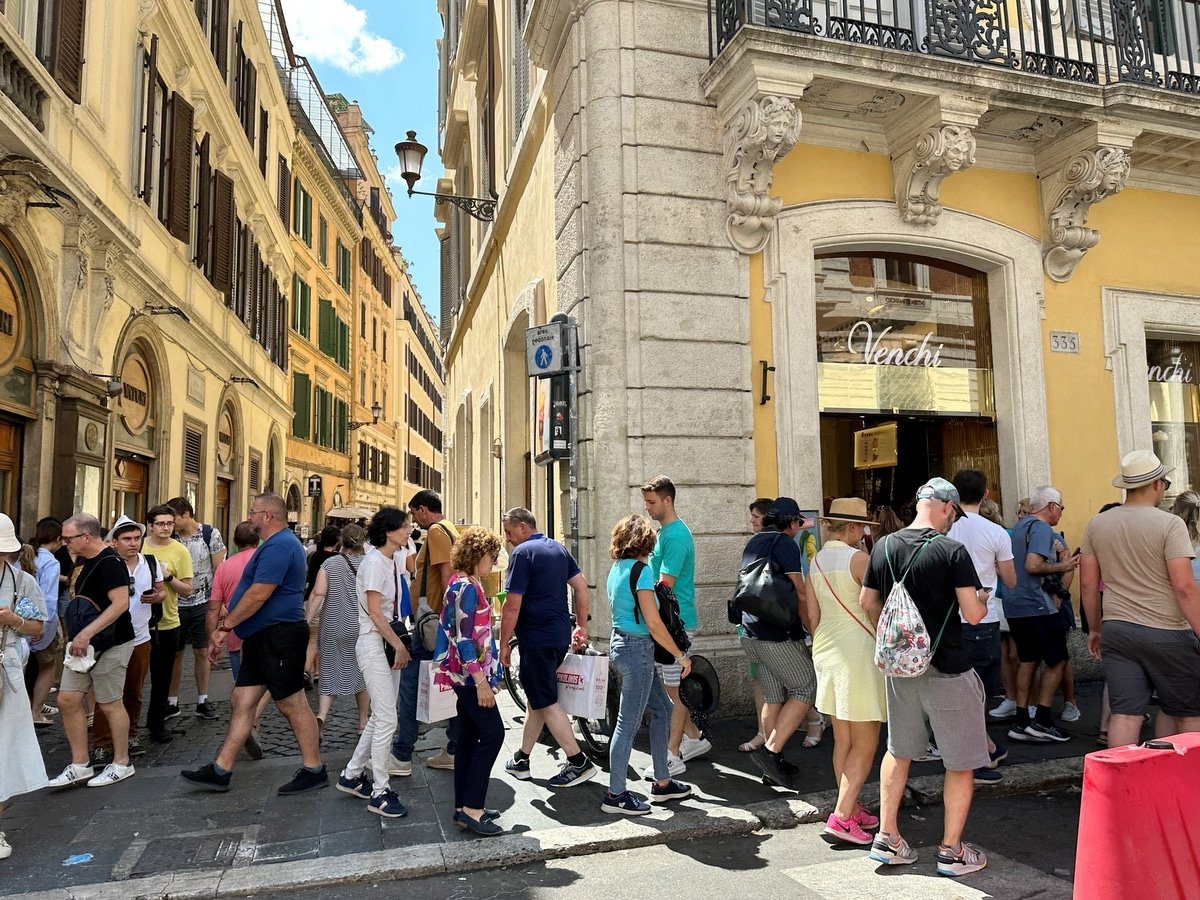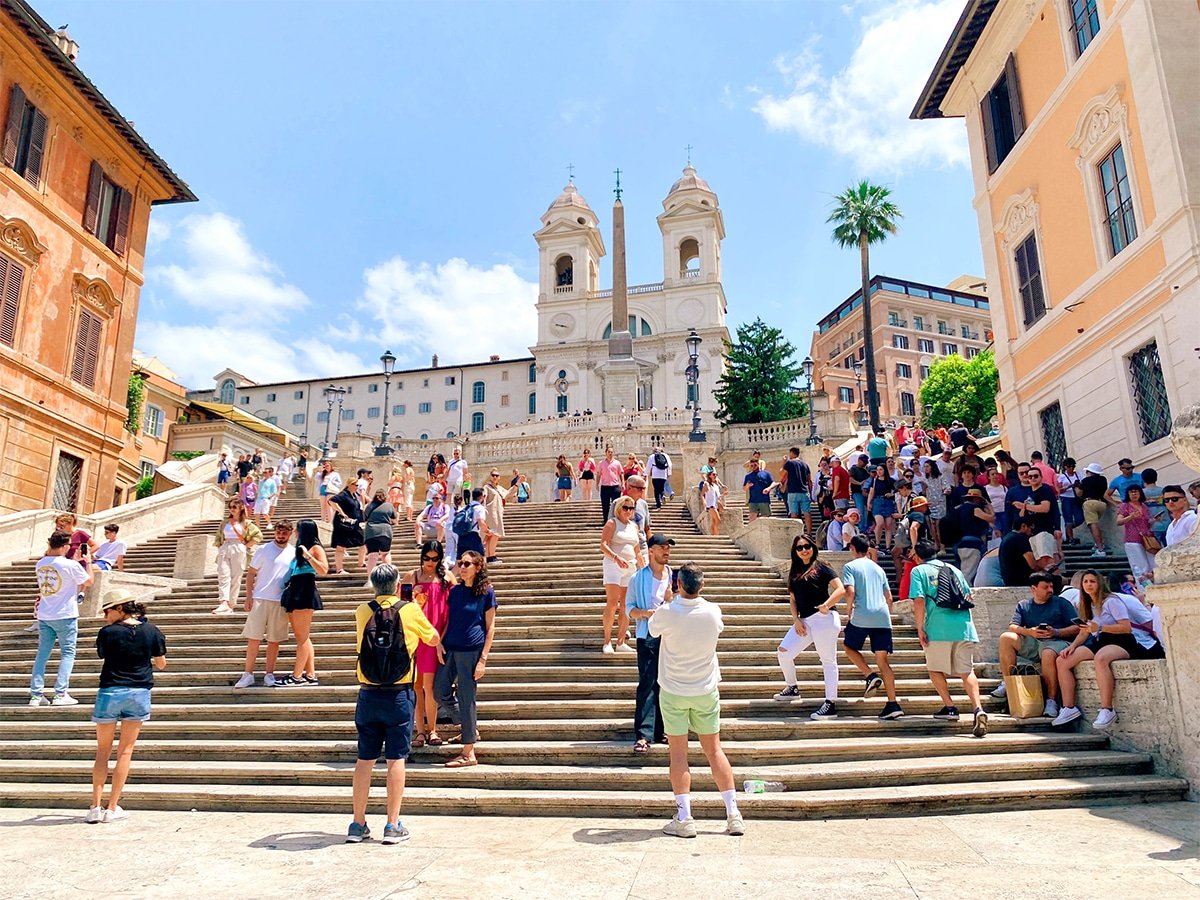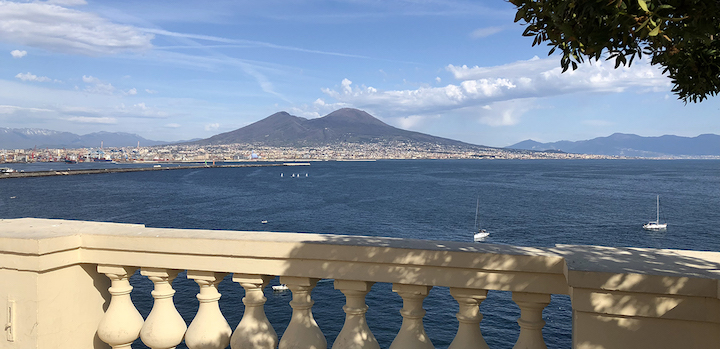
Naples, Italy. That beautiful, bustling ancient city by the sea. It’s one of the oldest continuously lived-in urban areas in the world as well as one of the most densely populated cities in Europe. When you first arrive in Naples, it can feel like each of its 3.2 million inhabitants are zipping along at warp speed through its narrow streets all at the same time—and that they’re all heading toward the same pizzeria you’re off to. But once you take a breath, you’ll see that in the land of Sirens and serenades, even the traffic has a musical tempo.
The true splendor of Naples lies in its self-confidence: When her people aren’t fending off invaders, surviving plagues or dodging lava flows, they’re creating some of the most famous art and food the world has ever known. And of all the places under their domain, this is where the ancient Romans chose to vacation and the only difference between you and them—besides access to antibiotics and the internet—is that they didn’t have a list of the top 7 things to do…
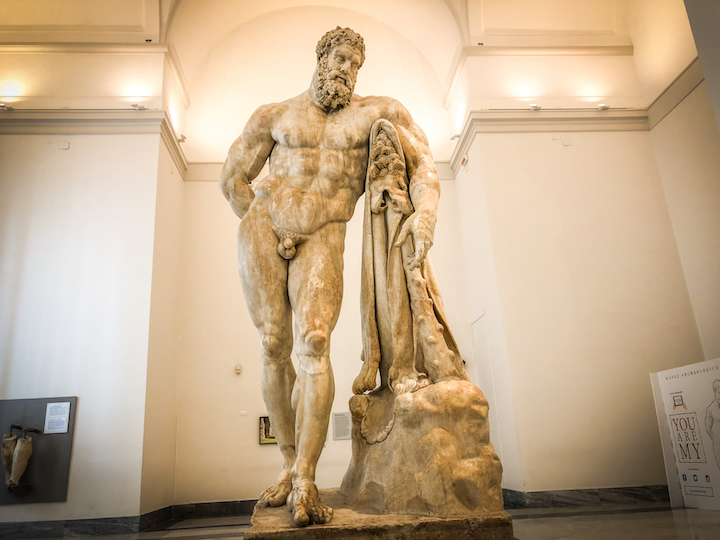
1. Visit the National Archeological Museum
Perched atop Vomero Hill, this 17th-century building had been the seat of the University of Naples until Charles III of Bourbon decided he needed a place to store the many Roman artifacts his teams were digging out of the ruins in Pompeii and Herculaneum. The National Archeological Museum now houses some of the world’s most important collections of Greek, Roman and Renaissance art. Their acquisition of marble is like none other. Make sure you take in the massive “Farnese Hercules” that stands at an impressive 10.5 feet. Another must-see is the “Venus Kallipyge,” carved in the 1st century B.C. in white marble. You can see for yourself why she’s called “Venus of the Beautiful Buttocks.”
Tip: Admission is free the first Sunday of the month and the museum is closed on Tuesdays.
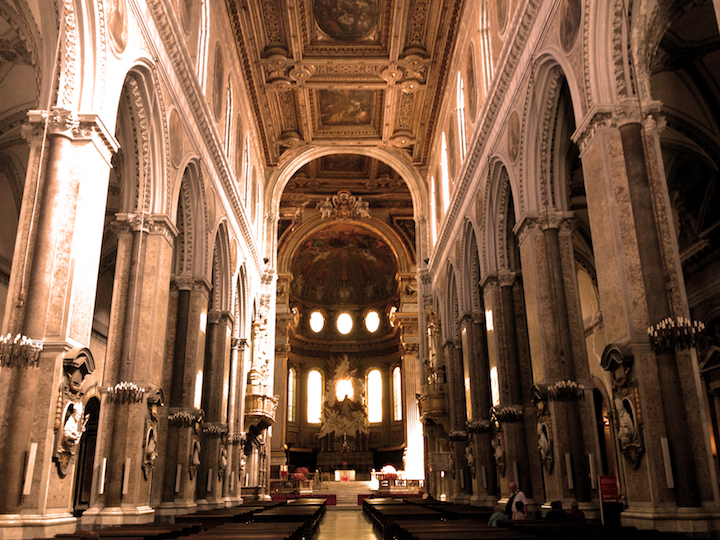
2. Naples Cathedral (Il Cattedrale di San Gennaro)
Named after the city’s patron saint, Saint Januarius (San Gennaro), Naples Cathedral has been the spiritual center of Naples since the Greeks owned this town. It was constructed in the 13th century on top of the remains of an ancient temple dedicated to Apollo, which dated back to the 4th century. The nave alone with take your breath away with over 100 classically designed granite columns. Beneath the church is the Crypt of San Gennaro, where a vial of the saint’s dried blood is supposed to liquify each September during the “Miracle of the Blood,” ensuring a serene Vesuvius and a winning season for Naples’s premier football team.
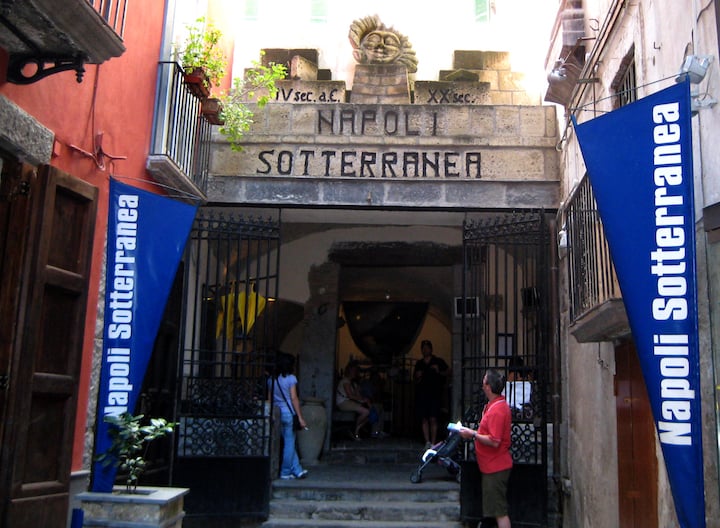
3. Explore Naples Underground (Napoli Sotterranea)
Forty meters beneath the old part of the city’s center is a 3,000-year-old labyrinth of caverns and tunnels filled with such a rich history that it would make Indiana Jones want to come out of retirement. Here, you can smell the city’s history wafting out of the tufa, the porous volcanic-based limestone that the Greeks used to build everything from streets to temples. The Romans used tufa to build aqueducts as well as cisterns. Most recently, these caverns provided safe haven to Naples’s sons and daughters during the relentless bomb raids of WWII.
You might want to hold off on eating pizza until after the tour, though. Several of the tunnels are fairly narrow and even some of the thinner visitors have to suck in their bellies to get through the tapered passageways.
Tip: Sign up for the Visitalia Tourist Card and get a 20% discount on the admission here and at many other museums and archaeological sites around Naples.

4. Eat Neapolitan pizza
Ah, the famous pizza Margherita with its distinctive three ingredients: locally grown San Marzano tomatoes, mozzarella cheese from water buffalos, and fresh basil. The fact remains that its birthplace is indeed Naples. Though not a fact: That it was invented by a pizzaiolo in honor of Queen Margherita of Savoy’s visit to the city. Recently discovered records prove that the pizza Margherita—though not with that name—existed 28 years before the queen ever made it this far south. But don’t let a little myth-debunking diminish the grandeur of the pie: UNESCO has added the art of Neapolitan pizza-making to its list of intangible cultural heritage.
Tip: Go to Antica Pizzeria Port’alba, which is considered to be the first pizzeria in the world. They’ve been lining their ovens with lava rocks from Mt. Vesuvius since 1830.
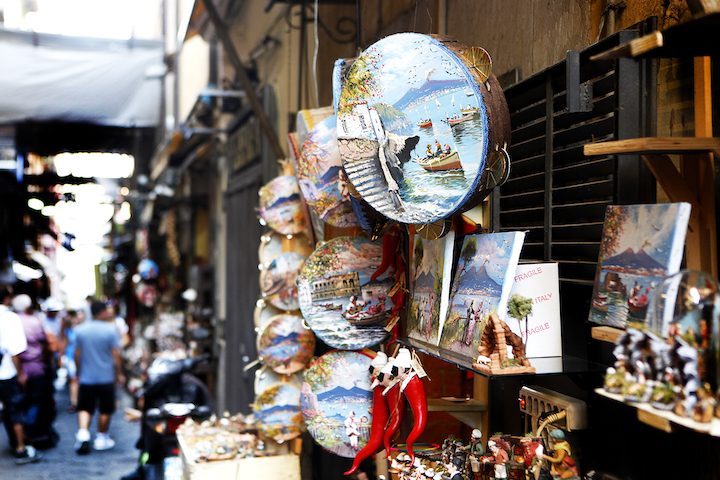
5. Shop the treasures of Via San Gregorio Armeno
Let’s go shopping! The best place to pick up authentic, traditional Neapolitan crafts is Via San Gregorio Armeno and the surrounding area near Via dei Tribunali. This area is famous for its presepe or “cribs,” which are handmade nativity scenes. And though this street can give the impression of Christmas all year long, it’s so much more. Wander into the endless shops, many passed from one generation to the next, and you’ll find everything from cornetti—the small red horns that are meant to bring luck and ward off the evil eye—to hand-painted tambourines depicting various scenes from Naples’s rich history.
Tip: Every time I’m in the area, I visit Delia D’Alessandro, the owner of Cosmos Artigianato Napoletano. She’s happy to give you a lesson in what you’re buying and you can trust that all her pieces are made in-house. After all, who wants to travel all the way to Italy just to buy something made in China?
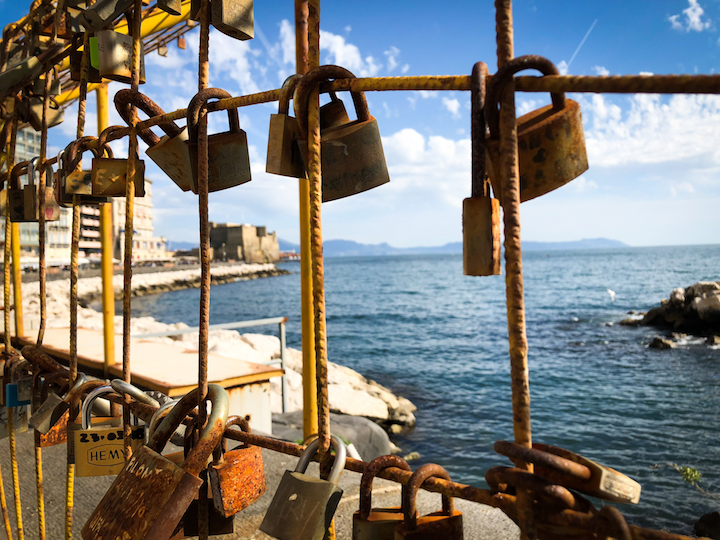
6. Stroll Il Lunogmare
This stunning 1.5-mile stretch of rocky shoreline is home to scores of delightful restaurants and stately hotels. For centuries, the local gentry have taken their Sunday constitutional along the Il Lunogmare promenade, which is one of the oldest parts of the region. It runs along via Partenope, named after the scorned Siren who was so distraught after failing to seduce Odysseus with her song of seduction that she flung herself amongst the rocks where Castel dell’Ovo now stands. It’s the perfect place to take a stroll, sunbathe or rent a bike. Or if you’re feeling lucky, you can attach a padlock with your and your beloved’s initials on a fence that has Castel dell’Ovo looming in the background and hope that unlike Partenope, you’ll have a happy ending.
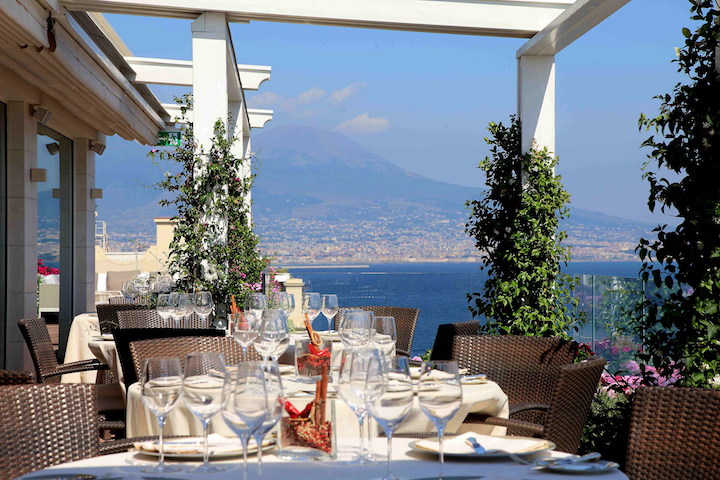
7. Have a drink in the Caruso roof garden
Located inside the prestigious Grand Hotel Vesuvio and named after famous tenor Enrico Caruso (who once lived on the property), the Caruso Roof Garden is my happy place—especially when there’s a piece of pizza in one hand and a cocktail in the other. The Caruso restaurant roof garden sits nine stories high and visitors of the hotel have been raving about this stunning panoramic since it opened its doors in 1882. You’re cradled by the National Archeological Museum (behind you) and breathtaking views of Bay of Naples, with Capri peaking above the horizon in front of you—all under the watchful eye of Mt. Vesuvius. It doesn’t get more authentic than this.
Tip: Do yourself a favor and book a room at the hotel. It’s a five-star property at value prices (from $292/night) and everyone from Oscar Wilde to Julia Roberts to the King of Spain has stayed here. And if you’re not impressed with a king then how about a boss? Bruce Springsteen used the hotel as his home base in 2013 when he played just down the street at Piazza del Plebiscito. And yes, he did sing “O Sole Mio.”
All photos credited to Denise Soulam Banks.

